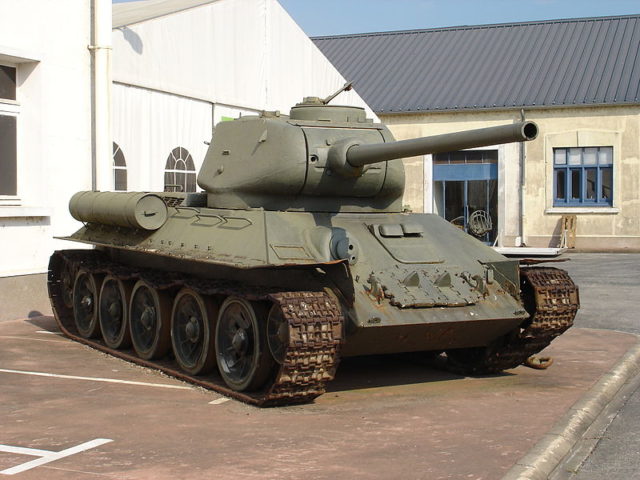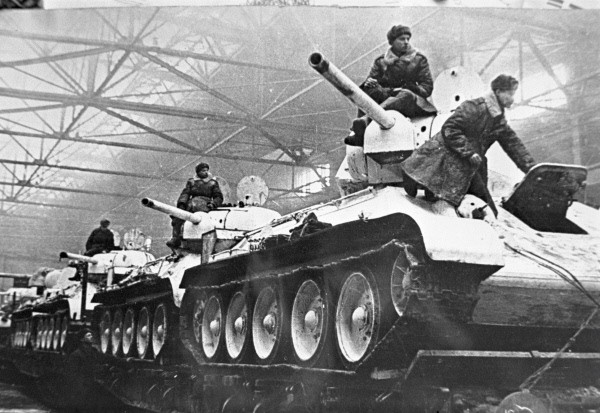What was the most lethal tank used in the Second World War? There are so many views as to the answer on this but here is the most favored:
The T-34 Tank

Image Source: Antonov14 CC BY-SA 2.5
The T-34 tank is very popular and well known by people who have a deep interest in WWII history. The books, documentaries, and movies presented it as a triumph. Due to its unmatched speed and revolutionary sloped armor, the Soviet had victory in the Eastern Front part of the country. Sloped armor characteristics mean that armor protection was considerably enhanced compared to traditional straight armor. It also gives extra protection without physical addition of armor which adds to the weight of the tank and eventually results in slowing the tank down.
T-34 was the newly designed armored tank; although it wasn’t sophisticated it was a killing machine for Germans in World War II. It has a 76mm gun and a thick armor with a cruising speed of more than 35 mph. At that time, there were many cutting-edge features in it and it can easily blow German Panzers in the field.
The Soviet T-34 was indeed an advanced tank which was designed to be reliable, lethal and cost-effective at the same time. It had a major impact on the battlefield, and the Germans were shocked how enemies could have come up with tank superior to their Panzers. Some experts have the opinion that it isn’t the easiest one to operate, however, the end product was the simple yet war effective machine. According to German Field Marshall ‘Von Kleist,’ Soviet T-34 is the finest tank in the world. It is also important to mention that this tank had great influence on future tanks.
![Soviet infantry advance alongside T-34 tanks. Summer 1944 [via]](https://www.warhistoryonline.com/wp-content/uploads/sites/64/2016/06/49.T-34-and-Red-army-advance-640x453.jpg)
Due to its economic cost T-34 tanks were produced in great numbers in Siberia. They were simple, rugged and were advanced in design as compared to Expensive German Panzers. In ‘Tankograd’, a Siberian city it was reported that more than 80,000 units of T-34 tanks were produced and dispatched into the battlefield. Sometimes the need was so urgent that they were sent without paint.
One of the major drawbacks observed in the T-34 was the two-man turret, apart from that its superior armor, firepower, and mobility had terrified the German army and German infantry were clueless as to what to do when seeing their anti-tank guns bouncing off the thick skin of T-34.
The answer could be a lot better if there were clear criterion defined for the word ‘lethal’. There are several factors which play a vital role in the ground like time frame, the number of kills, armor, Combat skills and number of enemy tanks destroyed. If we consider T-34, it had great chances of getting to the top of the list because it was terrifying to the German army and was considered as virtually unstoppable in 1940.
